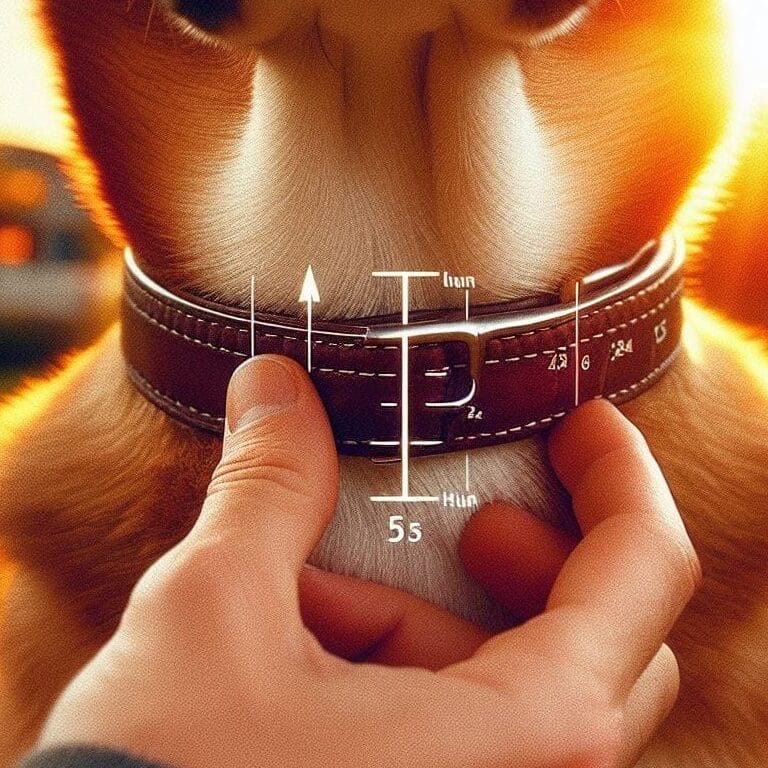When it comes to choosing the right dog collar thickness, selecting the appropriate width is crucial for your dog’s comfort, safety, and overall well-being. In this comprehensive guide, we delve into everything you need to know about dog collar thickness, including how to choose the right size for your pet, the benefits of different collar widths, and important considerations for various dog breeds. Whether you are a first-time dog owner or an experienced pet enthusiast, this article will equip you with the knowledge to make an informed decision.
Why Dog Collar Thickness Matters
Choosing the right dog collar thickness is essential for ensuring that your pet’s collar is both functional and comfortable. The thickness of a collar impacts its durability, the comfort it provides, and how well it fits around your dog’s neck. A well-chosen collar thickness can help prevent chafing, reduce the risk of injury, and enhance your dog’s overall comfort.
Factors to Consider When Choosing Dog Collar Thickness
1. Dog Size and Breed
Different dog breeds and sizes require varying collar thicknesses to ensure a proper fit. Here’s a breakdown of how dog size and breed influence collar thickness choices:
- Small Breeds: For smaller dogs such as Chihuahuas, Pomeranians, and Toy Poodles, a collar thickness of 5/8 inch to 3/4 inch is ideal. These collars are lightweight and less likely to overwhelm petite pets.
- Medium Breeds: Medium-sized dogs like Beagles, Cocker Spaniels, and French Bulldogs typically require collars that are 3/4 inch to 1 inch thick. This range offers a good balance between strength and comfort, ensuring the collar is sturdy enough without being cumbersome.
- Large Breeds: For larger dogs such as Labrador Retrievers, German Shepherds, and Golden Retrievers, a collar thickness of 1 inch to 1.5 inches is recommended. These collars need to be wide enough to handle the strength and size of the dog while providing adequate comfort.
2. Material of the Collar
The material used in the collar also plays a significant role in determining the appropriate thickness:
- Nylon Collars: Nylon is a popular choice for many dog owners due to its durability and affordability. For nylon collars, 3/4 inch to 1 inch thickness is usually sufficient for medium to large dogs, while smaller dogs might benefit from collars as thin as 5/8 inch.
- Leather Collars: Leather collars are known for their durability and classic appearance. Typically, 1 inch to 1.5 inches thickness works well for large dogs, while smaller dogs may prefer thinner leather options to ensure comfort.
- Adjustable Collars: Adjustable collars often come in various thicknesses and are designed to accommodate growth. For these collars, the thickness should match the dog’s size and the collar’s adjustability features.
3. Dog’s Activity Level
A dog’s activity level can also influence the ideal collar thickness. Active dogs that engage in regular running, playing, and outdoor adventures might benefit from thicker collars that offer more durability and support. Conversely, less active or indoor dogs may be more comfortable with a thinner, lighter collar.
How to Measure for the Right Collar Thickness
1. Measure Your Dog’s Neck
Accurately measuring your dog’s neck is crucial for selecting the right collar thickness:
- Use a Flexible Tape Measure: Wrap a flexible tape measure around the base of your dog’s neck, where the collar will sit. Make sure it’s snug but not tight, allowing for two fingers to fit between the tape and the neck.
- Consider Your Dog’s Fur: For dogs with thick fur, you might need to measure slightly tighter to ensure an accurate fit. Alternatively, measure under the fur to get a more precise measurement.
2. Test the Fit
Once you have the collar, test the fit to ensure it’s comfortable:
- Adjust the Collar: Place the collar around your dog’s neck and adjust it so you can slip two fingers comfortably between the collar and the neck.
- Observe Your Dog: After fitting the collar, observe your dog for any signs of discomfort or irritation. Ensure that the collar does not rub or cause any issues.
Benefits of Proper Dog Collar Thickness
1. Enhanced Comfort
A collar that is appropriately thick for your dog’s size ensures comfort and prevents chafing or irritation. This is especially important for collars that will be worn daily.
2. Improved Durability
Choosing the right collar thickness enhances the durability of the collar, ensuring it can withstand the wear and tear of daily use, especially for active dogs.
3. Safety Considerations
A collar that is too thin may not hold up well under strain, while one that is too thick may be uncomfortable. Proper thickness ensures that the collar is both safe and effective.
Conclusion
Selecting the correct dog collar thickness is vital for ensuring your pet’s comfort, safety, and overall satisfaction. By considering factors such as your dog’s size, breed, activity level, and the collar material, you can choose a collar that best meets your pet’s needs. Accurate measurement and fit testing are essential steps in this process.
Must follow us on Quora. Tayyab Ali



